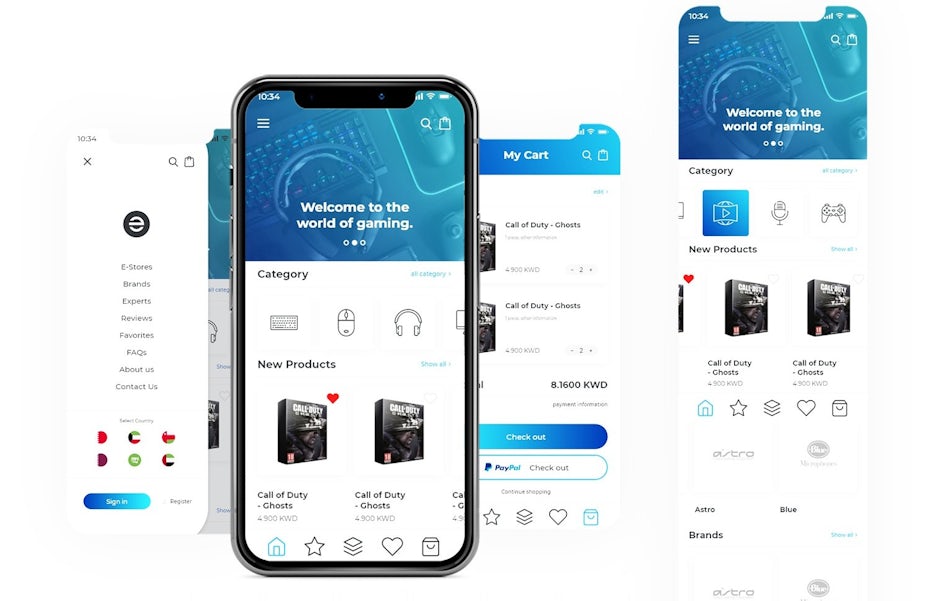
The Ultimate Guide to Mobile Optimization: Approaches for Enhancing Site Performance on Smartphones and Tablets
The methods for improving site performance on mobile systems go beyond plain adjustment; they encompass an extensive approach that involves receptive style, speed optimization, content approaches, and individual experience enhancements. By delving into the complexities of mobile optimization, companies can not just satisfy user assumptions however also remain ahead in a competitive electronic landscape.
Significance of Mobile Optimization
Mobile optimization plays a pivotal duty in improving user experience and driving conversion prices in the ever-evolving digital landscape. With the increasing use mobile phones and tablet computers for searching the internet, making certain that web sites are optimized for mobile tools has come to be necessary for services - Mobile Optimization. A mobile-optimized website not only adjusts perfectly to various screen sizes yet likewise lots quickly, supplying users with a smooth and satisfying browsing experience
In today's hectic globe, users expect instantaneous access to info on the move. A site that is not maximized for smart phones dangers shedding potential customers because of reduce loading times or a bad individual interface. By purchasing mobile optimization, businesses can satisfy the requirements of their mobile audience, bring about higher interaction and raised conversions.
In addition, internet search engine like Google prioritize mobile-friendly sites in their positions, making mobile optimization crucial for boosting exposure and drawing in organic traffic. Mobile Optimization. In general, the value of mobile optimization can not be overstated, as it straight impacts user satisfaction, conversion prices, and total business success in the digital world
Responsive Style Methods
Implementing responsive layout strategies makes certain that internet sites dynamically adjust their design and content based upon the customer's device screen size, providing a regular individual experience across different platforms. Among the most common methods made use of in responsive style is developing fluid grids that allow web content to resize proportionally to the screen dimension. This makes sure that components on the page keep their relative spacing and arrangement, enhancing the seeing experience for users on different devices.
Additionally, utilizing flexible pictures that can scale with the dimension of the viewport assists prevent photos from being chopped or misshaped on smaller displays. CSS media questions play an important duty in responsive design by allowing programmers to apply certain styles based on the gadget qualities such as screen width, elevation, and orientation. By leveraging media queries, websites can adjust their design and design to suit smart devices, tablets, and desktop displays flawlessly.
Integrating responsive style techniques not only enhances user experience yet additionally adds to enhanced internet search engine rankings, as search engines like Google prioritize mobile-friendly internet sites in their mobile search engine result. By welcoming responsive design, websites can provide to the varied needs of individuals accessing material on a selection of tools, eventually driving engagement and conversions.
Rate and Performance Optimization

One secret technique is optimizing photos and multimedia web content to reduce data sizes without endangering high quality. Compressing photos, leveraging contemporary photo styles like WebP, and lazy filling offscreen images are effective approaches to speed up lots times (Mobile Optimization). Additionally, reducing HTTP demands, leveraging web browser caching, and reducing web server response times are critical steps in boosting performance.
Applying a web content distribution network (CDN) can also dramatically increase site rate by distributing web content throughout several web servers worldwide, decreasing latency for users accessing the website from different areas. Prioritizing crucial above-the-fold content and delaying non-essential scripts can further enhance regarded performance. By concentrating on speed and efficiency optimization, web sites can deliver a seamless and rewarding user experience on mobile phones.
Mobile-Friendly Material Strategies
Mobile-friendly web content approaches involve tailoring the presentation of details to fit the smaller sized displays and on-the-go nature of smart device and tablet customers. Additionally, damaging up web content into shorter paragraphs and using bullet factors can help improve readability and make it less complicated for individuals to take in details rapidly.
Integrating appealing visuals, such as pictures and videos maximized for mobile viewing, can likewise improve the general customer experience. These visuals should matter, premium, and tons rapidly to stop customers from wearying. Integrating interactive components like quizzes, surveys, or studies can boost user engagement and urge active involvement.
Individual Experience Enhancements
Structure on the foundation of mobile-friendly material approaches, boosting individual experience requires enhancing every touchpoint to make sure smooth communication and contentment for mobile users. One essential aspect of boosting individual experience on smart phones is ensuring quickly packing times. Individuals expect web sites to pack quickly on their smart devices and tablet computers, and any kind look here of hold-ups can cause disappointment and raised bounce rates. Applying responsive style is one more essential consider boosting customer experience. Receptive design ensures that internet sites adjust to numerous screen sizes and resolutions, offering a regular and straightforward experience across different gadgets.
Maximizing forms for mobile users by decreasing the number of fields and making use of auto-fill functions can additionally improve the general user experience. By concentrating on these individual experience enhancements, sites can effectively involve and retain mobile visitors.
Conclusion
To conclude, mobile optimization is crucial pop over to this web-site for improving site performance on smartphones and tablets. By implementing receptive layout strategies, maximizing speed and performance, developing mobile-friendly web content, and boosting customer experience, organizations can successfully reach and engage with their mobile audience. It is vital for sites to adjust to the boosting mobile usage fads in order original site to continue to be affordable in the digital landscape.